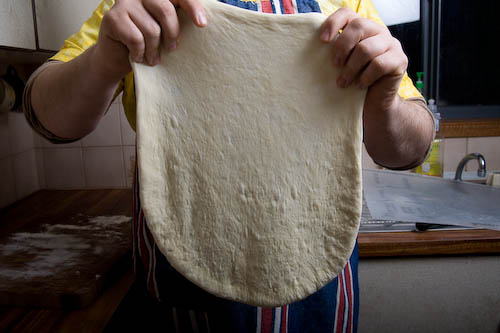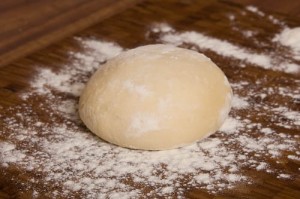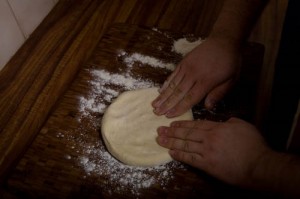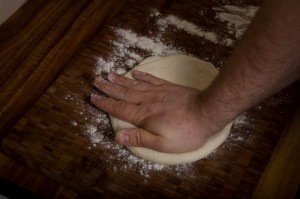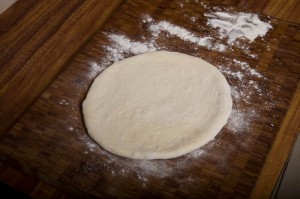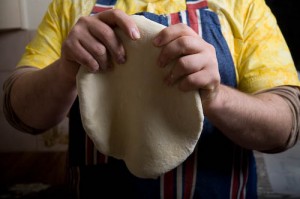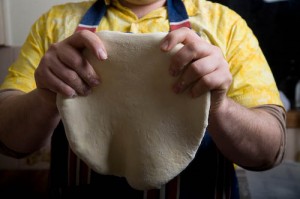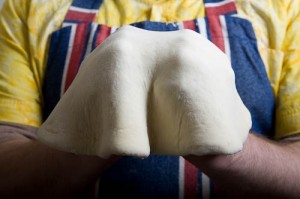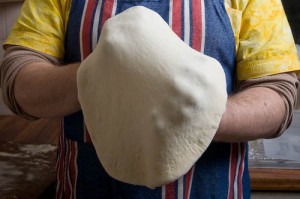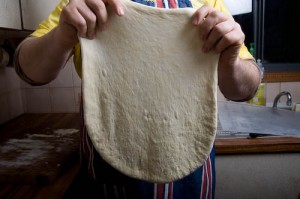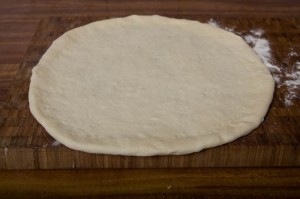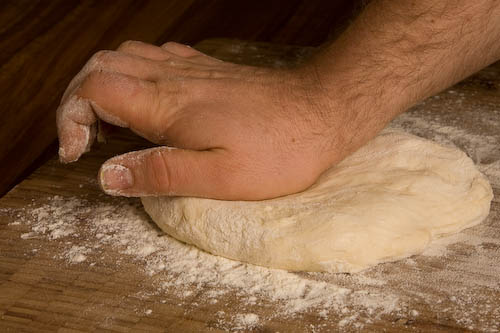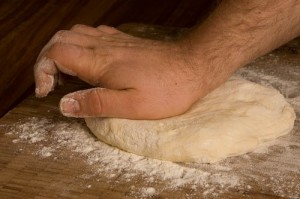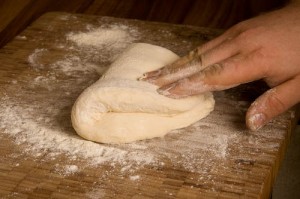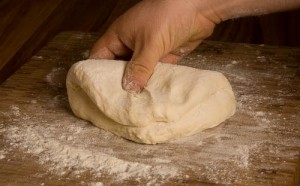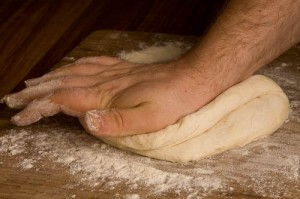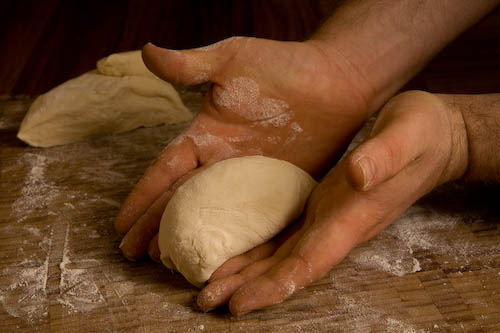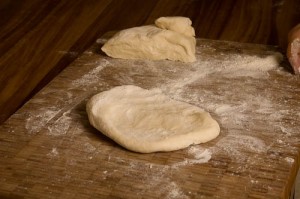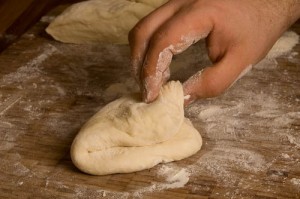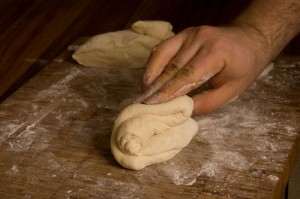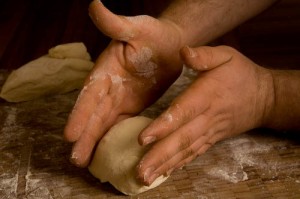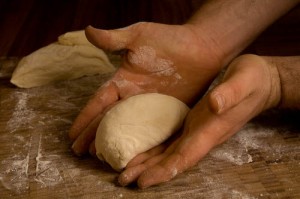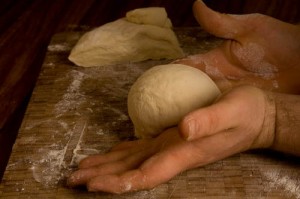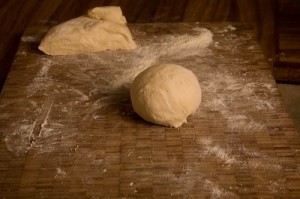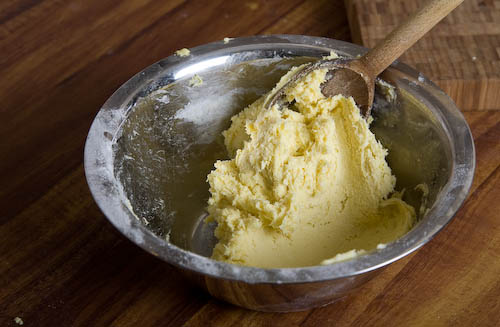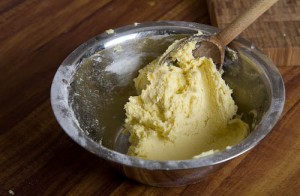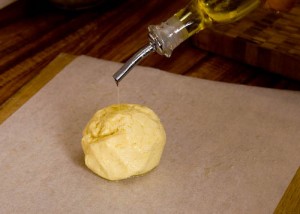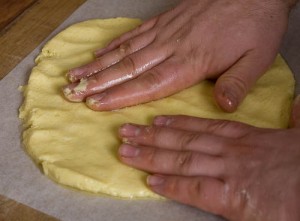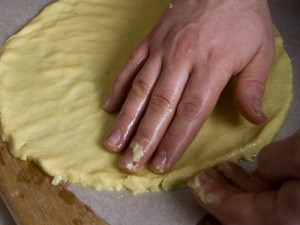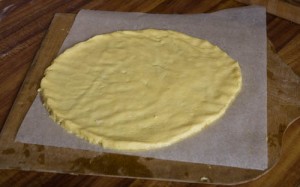This is a new version of a gluten free pizza base that I have been working on and I think it’s finally ready to share! I’m quite excited about this base – you would be hard pressed to pick it as gluten free and it tastes delicious. The key is to give the shaped base time to rise before topping and baking.
Full credit to the talented Dan Lepard who wrote a recipe for gluten free bread using psyllium husks. I had never used these before and they work amazingly well in gluten free doughs, helping the dough to rise naturally and giving a nice chew to the cooked base. I use both yeast and baking powder in this recipe to get as much lightness in the dough as possible without overloading on the taste of either ingredient. Another interesting addition can be to add some herbs and spices to the dough as in this gluten free pizza recipe. Maybe not for the purists but worth considering.
I have included links to some of the more unusual ingredients on Amazon, but you should be able to find them in your local health food store.
Ingredients – makes 2 bases
| Ingredient | Weight | Measure | Bakers Percentage |
| Rice flour | 140g | 1 Cup | 100% |
| Tapioca starch | 70g | ½ Cup | 50% |
| Cornflour | 70g | ½ Cup | 50% |
| Soy flour | 20g | 2 Tbsp | 14.3% |
| Psyllium husks | 12g | 2 Tbsp | 8.6% |
| Guar gum (you could use Xanthan gum if preferred) | 6g | 2 Small Tsp | 4.3% |
| Instant Dried Yeast | 12g | 4 Level Tsp | 8.6% |
| Baking Powder | 8g | 2 Level Tsp | 5.7% |
| Salt | 8g | 2 Level Tsp | 5.7% |
| Olive oil, plus more for shaping | 20g | 2 Tbsp | 14.3% |
| Sugar | 20g | 14.29% | |
| Gluten free Vinegar | 3g | 2.1% | |
| Warm water | 110g | 1/2 of a cup | 78% |
Method
- Mix together all of the dry ingredients
- Add the oil, vinegar and water and stir well for about 30 seconds. The dough should be a stiff, sticky paste.
- Lay out 2 squares of oiled baking paper. Oil your hands to prevent sticking, and separate the dough into equal sized lumps.
- Following the shaping technique from my previous gluten free dough recipe, press the dough into a disc shape. Drizzle with as much olive oil as needed to make the dough workable. Aim for a base about 4mm thick with a slightly raised edge.
- Lay a piece of plastic wrap or baking paper over each base to stop it drying out and leave to rise for about 1 hour. You should also start preheating your pizza stone at this point.
- Once the bases have risen for an hour and the oven is properly hot, add cheese, sauce and ingredients according to your recipe and slide the pizza along with its sheet of baking paper into the oven. Cook until the crust is starting to brown, rotating in the oven halfway through cooking if necessary. You can also finish it off under the grill for a minute to really get the top browned well.
NOTES: If you don’t have all of these ingredients, you could substitute the rice flour, corn flour & tapioca for a commercial gluten free flour mix. The soy flour could be replaced by millet flour, fine polenta or maize flour as it is used to add flavour and colour. If reducing the sugar at all, add a pinch more baking powder as the sugar helps the yeast leaven the bread. Salt can be reduced or eliminated completely; it is mostly for flavour.
